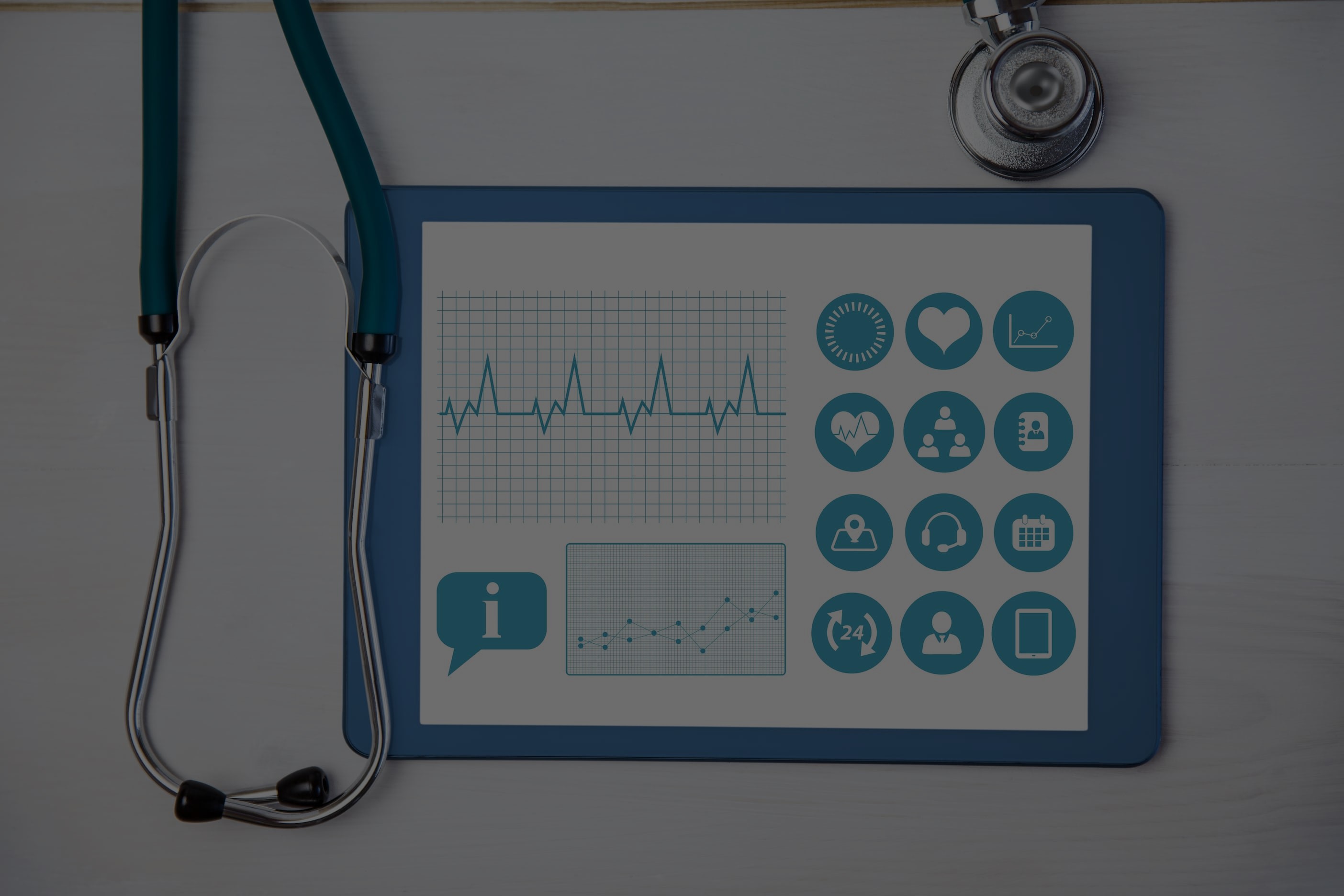
The role of AI in
custom healthcare software development
Introduction
Artificial intelligence (AI) was once the stuff of futuristic
fantasies, but at this very moment, it is quickly influencing the
healthcare industry's methods, processes, and capabilities.
Organizations across the sector are now harnessing AI technologies,
which look set to continue influencing the future of healthcare.
From early detection to tailored, evidence-based treatment plans to
the speed and accuracy of tens of thousands of administrative tasks
daily, AI is shining a light on previously locked-away benefits,
boosting efficiencies, reducing errors, and empowering healthcare
professionals. Far from being a pipe dream, the power and potential
of AI in improving care, staving off illness, and saving lives is
becoming increasingly clear. As expectations continue to rise around
the quality and delivery of healthcare worldwide, AI is helping to
ensure that a growing number of people get the best possible care.
Healthcare organizations require tailored software that harnesses
the power of AI to address their unique challenges as they arise.
Off-the-shelf software often falls short in adapting to the diverse
workflows, regulatory issues, staffing changes, and other factors
that characterize each healthcare organization. Custom software,
designed with AI in mind, is the solution. It equips healthcare
providers at the forefront of medical advancements with the
technology they need, not just for the present but also for the
future.
Understanding the role of AI in healthcare software development
What does AI mean in the context of
custom software development for healthcare? AI refers to a non-biological system or computer's ability to
perform tasks typically associated with human intelligence. This
includes advanced information analysis, learning capabilities, and a
level of reasoning, perception, and recognition. Cognitive computing
forms the basis for building AI. We are already witnessing AI
systems with enhanced data analysis and predictive capabilities in
healthcare software. AI technology can assist healthcare
professionals and services by utilizing large medical-related
datasets to identify patterns and predict disease states and patient
outcomes. It also enables the automation of routine administrative
functions, such as appointment scheduling, billing, and patient
record management, thereby freeing healthcare professionals from
mundane clerical tasks and enhancing the capabilities of hospitals
and other healthcare organizations on a larger scale.
As well as directly improving the care that patients receive, AI is
also streamlining much of the administrative process of hospitals.
On the clinical side, artificial intelligence tools are used to aid
in the accuracy of diagnosis, design personalized treatment plans,
and track in-hospital and remote patient health data in real-time,
thanks to data from wearable devices. Some applications use AI tools
that analyze medical images and are superior to experienced
specialist physicians at spotting early signs of diseases such as
cancers. On the administrative side, AI can optimize the efficiency
of hospital operations, reducing costs and time spent on sourcing
and receiving supplies, auto-scheduling appointments, and managing a
hospital’s electronic health record. Integrating AI into the
software that facilitates hospital operations increases the
efficiency of these operations and, in turn, patient experience.
Benefits of integrating AI into custom healthcare software
AI can strengthen the offerings of healthcare software product development, allowing healthcare providers to transform patient care and operational efficiency. Machine learning and predictive analytics can deliver tailored and accurate treatments, automate administrative processes, and enable better decision-making through access to quality data. The integration of AI allows healthcare providers to not only improve the quality of care but also letting them maximize resources and minimize costs while improving precious results.
Enhanced patient care
With AI incorporated into personalized healthcare software, patients can receive the most efficient and accurate care, which can lead to positive life-changing outcomes. AI can be used to create highly personalized treatment plans for disease by incorporating an individual patient’s medical history, genetic information, and lifestyle factors into its algorithms and thereby being able to develop better, more nuanced treatment plans that address a patient’s specific needs more effectively than a one-size-fits-all approach. Artificial intelligence can glean patterns from a patient’s long-term medical records to accurately predict their chances of an unfavorable outcome, allowing for earlier intervention to prevent or mitigate complications. In diagnostics, AI can analyze medical images to detect the subtle changes that define a health condition, and as machines can process images faster and with more accuracy than the human eye, AI-driven diagnostics can be used in the early detection of many health conditions.
Operational efficiency
AI also plays a critical role in improving operational efficiency and saving healthcare systems costs. By automating routine administrative tasks through custom healthcare software solutions, including scheduling appointments, managing patient files, and billing, AI reduces the time and effort healthcare staff would have had to dedicate to these processes. This improved efficiency allows providers to spend more time on patient care without increasing the risk of such tasks being performed with human error. Moreover, AI can improve the allocation of resources by analyzing data to predict patient demand, track inventory, and allocate staff more strategically.
Data-driven decision-making
Another advantage of using AI in custom healthcare software is improving the organization’s decision-making ability. One main factor that stands out in AI is the ability to process and analyze application data rapidly and accurately. AI technologies could provide additional data that inform clinicians to provide better and more meaningful insights to drive decisions that could impact patient care. This way, the data revolution and digitalization could help healthcare providers resolve inefficiencies through better technology. Data will also help them reduce procedure and drug errors, and as more providers incorporate AI capabilities, they will examine it and stress test what is possible today, what is coming tomorrow, and what could be feasible in years to come. AI can also analyze trends in patient data to identify emerging health risks or diseases. It can guide or optimize treatment protocols, as well as improve hospital workflows for processing patient visits, testing procedures, and reporting symptoms.
Key AI technologies in custom healthcare software
The technologies that make AI potent are also making healthcare custom software development smarter, more effective, and more efficient. All the familiar technologies in AI are starting to help: machine learning, natural language processing, and predictive analytics power new software capabilities, helping to improve diagnostics, provide better patient care, and automate administrative tasks. To develop and deploy interesting custom software for healthcare, you need to understand these technologies.
Machine learning
ML (machine learning) drives any custom healthcare software algorithms as they improve with time. That’s because ML learns from data, identifying patterns and becoming more accurate at predicting outcomes without being explicitly programmed to perform each new task. In medicine, the ability to adapt helps any ML-heavy software improve its diagnosis, personalization, and adjustments to patient care as it processes new data. Take diagnosing critical conditions. For example, analyzing many medical images in neurology helps an ML algorithm find more abnormalities. This speeds up the diagnostic process and can thus mitigate critical conditions. Such adaptability is an ideal solution for a field where we can’t afford to make a single mistake.
Natural Language Processing (NLP)
Natural Language Processing (NLP) helps make healthcare software more useful because it can extract information from human languages in medical contexts. For instance, NLP can be used to identify medically relevant information from sources such as unstructured data, like medical notes in the electronic health record, patient-narrated notes, or conversational topics between patients and their doctors. This unstructured data can be converted to structured data by NLP, which helps decision-making and workflow planning in terms of efficiency. If questions asked by patients can be distilled into natural-sounding text, this information can be digitized as an automatic note summary about a patient’s history. In another example, this could be presented in a chatbot tool for questions asked or received by many patients as an automatic transcript in real time. The conversion of human language into digital ones and zeros in this way makes for a much more usable health software application.
Predictive analytics
Predictive analytics enables drugs, treatments, and resources to be assigned in response to anticipated requirements. Recent supercomputing advances are now being applied to healthcare using predictive analytics to forecast demand and anticipate outbreaks. Basic predictive models can predict patient admissions and help identify those at risk of developing certain medical conditions, identifying lifestyle patterns or exposures that can build up to put them at risk of disease. More advanced models are now being developed to anticipate epidemic spread, enabling interventions to be timed better and earlier to contain disease. Predictive analytics underpinned the unprecedented containment of the Ebola outbreak in West Africa between 2014 and 2016. These are just examples of how artificial intelligence and the intelligent use of large datasets can improve public health and healthcare delivery.
Challenges and considerations in AI-powered healthcare software development
The requirements for creating responsive AI-based healthcare
software are quite nuanced, with issues around data privacy, ethical
consciousness and limitations, and the need for extensive training
data. Data privacy is of the utmost importance –
custom healthcare software development services
often contains confidential patient information that must adhere to
regulations such as HIPAA or GDPR. For AI to continue to be used to
its fullest potential in the medical field, it must be assured that
no security breaches occur with these higher-than-most levels of
sensitive data. This means that the use of AI in healthcare is
inherently based on unwavering data security standards. Today, there
are several metrics for proving that an AI is transparent, fair, and
unbiased – the same is expected when using an AI model to make
healthcare decisions. Creating automatic medical diagnosis and
information processing programs has always been the dream of many.
However, associating bias with AI goes against the grain: bias
indicates inherent flaws that jeopardize care quality, not a
novelty.
These challenges can be mitigated with planning and development
practices that provide robust data privacy around personal medical
information via encryption, access controls, and regular security
audit ethical safeguards around how AI systems impact patients via
ethical AI frameworks that provide solution-based structures for
developers to adhere to, demonstrating transparency, accountability
and bias reduction in AI models proper preparation of training data
that meets the minimum standards for AI usage, including system-wide
reinforcement and retraining, as well as diversity and quality
controls for the training and living data.
Future trends in AI and custom healthcare software
What will that future feel like through the prism of AI? Emerging
areas such as AI-driven telemedicine, remote monitoring, and
precision medicine will guide the march of artificial intelligence
in healthcare IT. AI-driven telemedicine has already given patients
access to more versatile and personalized care provided virtually.
By processing patient data during virtual visits, a robust AI
algorithm allows a provider to connect with patients wherever they
are while improving the insights delivered to a healthcare provider,
helping him or her tailor recommendations to each patient.
Similarly, AI-enabled remote monitoring tools are on the verge of
becoming more sophisticated, constantly tracking patients’ health
metrics in real-time. You can incorporate them by opting for
custom healthcare software development
which can help detect potentially problematic trends earlier and
allows doctors to intervene before a patient becomes sick.
Even more advancements are coming in the future because AI is a
powerful technology that will help increase functionality in
healthcare software. It will enable precision medicine, which uses
genetic profiles and other individualized patient data to prevent
and treat disease. Many patients respond well to precision medicine,
which means more effective treatments with fewer side effects. Other
advancements in AI technologies, including machine learning and
neural networks, are expected to enable natural language processing
(NLP). In addition, the current advances in electronic health
records and mobile health technologies will enable better ways to
collect and deliver patient data. More intuitive, smarter, and
faster applications powered by these technologies are expected to be
developed in the coming years, thus transforming healthcare delivery
forever.
Conclusion
Overall, it can be concluded that currently, AI is making a strong impact on custom healthcare software development company, including various innovative solutions that can ultimately enhance the care of patients, improve the usability and responsiveness of healthcare processes, and help make correct decisions based on empirical data. As demand for more personalized, efficient, and secure solutions grows in the healthcare sector, it becomes increasingly important for all healthcare providers to integrate AI into their custom software development to keep up with the current trends and be a step ahead of the curb. Utilizing various AI technologies like machine learning, natural language processing, and predictive analytics will eventually ensure a higher quality of patient care and improve the cost-effectiveness of managing the processes. Undoubtedly, AI advancements today promise to revolutionize the industry and become an essential tool in tomorrow's healthcare.
People Also Ask (PAA) Questions
-
How is AI used in healthcare software development?
When developing healthcare-related software, AI can automate processes, facilitate diagnoses, optimize treatments, and ultimately help make better decisions by analyzing large data sets. -
What are the benefits of AI in healthcare?
AI helps doctors provide better patient care. It makes administrative tasks easier and eliminates human mistakes. It also allows doctors and hospitals to use data and make better decisions to improve their services. 1. improving patient care, ease of administration, and reducing errors brings about better healthcare services. 2. Another advantage is how helpful AI is in allowing doctors and hospitals to use big data and make better decisions to produce good medical services. 3. Therefore, it can be stated that medical services will become more efficient and effective shortly. -
How does AI improve patient care?
AI empowers healthcare professionals by personalizing treatments and medicines, speeding up diagnosis, and monitoring patient’s health in real-time. -
What challenges exist in AI-powered healthcare software?
Oversights include protecting personal information, ethical questions, hurdles inherent in AI training, and requiring extensive and representative training data (not to pack bias into the training data). -
What role does machine learning play in healthcare software?
The application of machine learning patterns enables healthcare software to improve on its own, as it learns from data on the fly: it makes better predictions, detects more diagnoses, and provides better personalized care. -
How can AI-driven software enhance operational efficiency in
healthcare?
This software uses artificial intelligence to reduce the time spent on administrative tasks and other performance issues, freeing up caregivers to spend more time with patients instead of on paperwork. -
What are the future trends in AI and healthcare technology?
Ongoing trends include AI-powered telemedicine, AI-based predictive modeling/analysis for quality care at remote sites, and further improvements in AI-enabled precision medicine. Of course, AI continues to accelerate the pace of innovation. -
How does predictive analytics work in healthcare?
Predictive analytics uses artificial intelligence to analyze past and present data to predict patient outcomes, anticipate healthcare trends, and provide early interventions to improve care.



